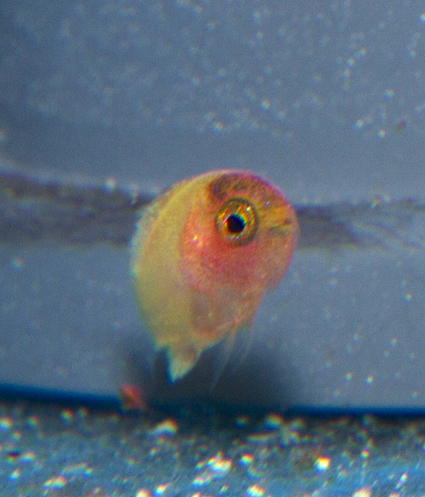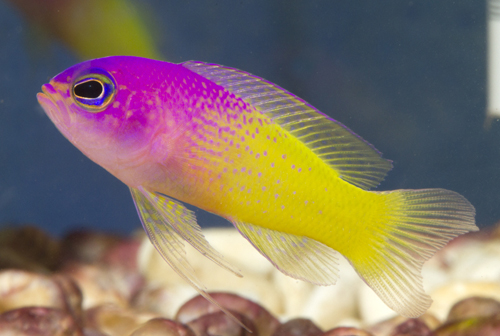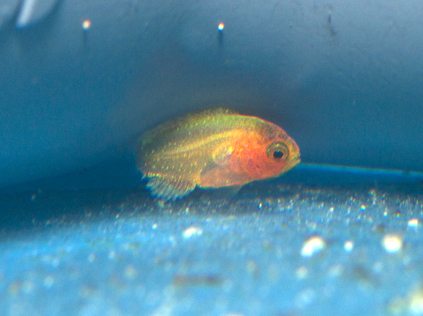
You can now add the high-priced bicolor basslet, Lipogramma klayi, to the list of marine species that have been raised for the first time at the Long Island Aquarium. Thanks to another generous donation from one of my biggest supporters, Forrest Young at Dynasty Marine Associates, I have had the privilege of conditioning a small broodstock (2 pairs) of L. klayi for the last couple of months. Last week we were rewarded with our first glimpse of a newly settled bicolor basslet in one of our rearing tanks.

Now that we’ve seen their price plummet from around $2000 last year, to a mere $849 in the Diver’s Den last month, the bicolor basslet is practically within the reach of anyone who might be interested in in trying to breed it. With a larval period of just over a month, these guys seem like a breeze compared to the Liopropoma species, however they are not without their own bottlenecks that will certainly limit commercial production – like the fact that they only seem to lay 1-5 eggs at a time, and they prefer cooler water than can be found in your average reef tank (71F or 22C).

Details of the spawning and rearing of this exsquisite little basslet will be discussed at tonight’s meeting of the Brooklyn Aquarium Society and of course, at the MBI workshop on July 28th. Hopefully I’ll also get around to writing an article for an upcoming issue of Reefs Magazine for anyone who can’t make the meetings.










Seems to be a glitch in the captioning function, but all three photos were taken by Christopher Paparo. Check out Fishguyphotos.com for more great nature and marine life photography.
Hey Todd
thank you yesterday for the great presentation at the BAS (Brookly Aquarium Society)meeting I want to see if I can get a copy of the presentation, because it was informative. I purchased a pair ORA Spotcintus (A. bicinctus). I checked the salinity and compared my water with the salinity of the bag, and compared to mine, salinity was very low. At what salinity do you keep them?
Thanks
We use seawater from Shinnecock bay, so our salinity is normally a little lower than your average coral reef or home aquarium. It usually runs about 20-25 parts per thousand. They should make the adjustment with no problem.